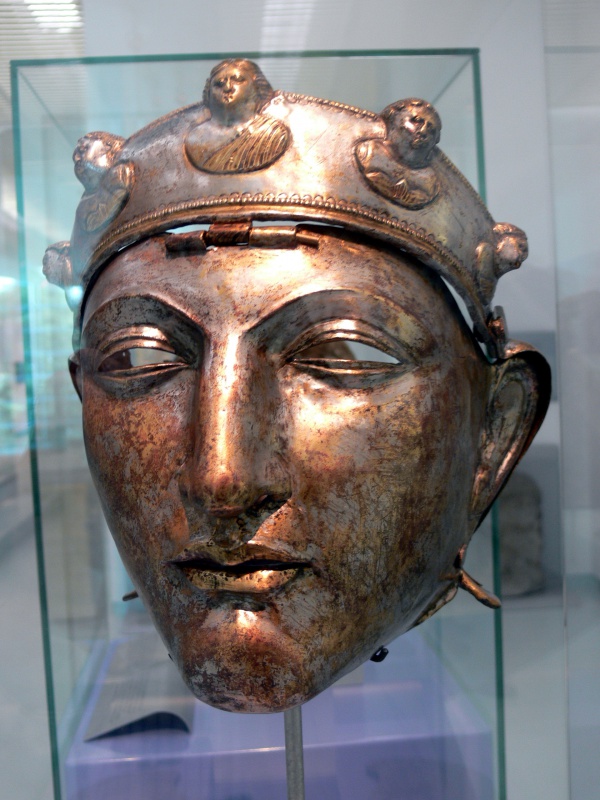Facts About Nijmegen Helmet
The Nijmegen Helmet is a remarkable artifact of Roman history, dating back to the first or second century AD. This exquisite Roman cavalry sports helmet was unearthed around 1915 near Nijmegen, a city in the Netherlands. It was most likely worn by elite Roman cavalry.
The helmet is highly intricate, composed of three main components: an iron headpiece, a bronze or brass mask and diadem, and a silver-plated neck guard. The diadem is particularly intriguing, adorned with figures of two males and three females.
The mask, crafted from silvered bronze, depicts a youthful face with gilded features and openings for the eyes, mouth, and nostrils. The brow band is embellished with raised busts and beaded lines, contributing to its elaborate design.
Upon its discovery, the helmet was accompanied by two cheek guards, glass beads, and fragments of an iron skull cap. Initially, it was exhibited at the Kam Museum in Nijmegen before being relocated to its current residence at the Valkhof Museum. In 2011, the helmet even traveled to England for an exhibition at the Tullie House Museum and Art Gallery.
Experts classify the Nijmegen Helmet as a Type D cavalry sports helmet, according to H. Russell Robinson's typology. This classification is based on distinguishing features such as the horizontal hinge that attaches the face mask to the headpiece, designed to resemble a decorated helmet.
Today, the Nijmegen Helmet stands as a striking testament to the craftsmanship and culture of Roman military elites, offering a window into their sophisticated skills and artistry.

 Germany
Germany